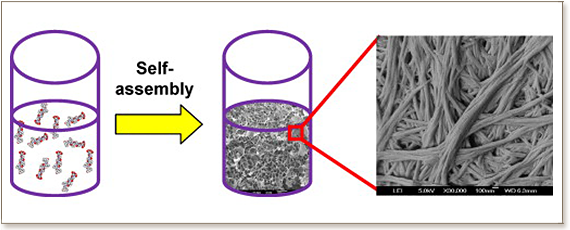
Ultrasmall natural peptides self-assemble to strong temperature-resistant helical fibers in scaffolds suitable for tissue engineering
A. Mishra, Y. Loo, R. Deng, Y.J. Chuah, H.T. Hee, J.Y. Ying and C.A.E. Hauser
NanoToday, 6 (2011) 232-239

A new class of systematically designed ultrasmall (tri- to heptamer) peptides presents the smallest natural, non-aromatic structures that self-assemble in water to hydrogels. The peptide motif consists of an aliphatic amino acid tail of decreasing hydrophobicity capped by a polar head. The fibrous scaffolds assemble from nanostructured aggregates to condensed three-dimensional (3D) meshes, entrapping up to 99.9% water and resembling collagen fibers in the extracellular matrix. The resulting hydrogels are biocompatible, heat resistant up to 90 degrees C and demonstrate tunable, high mechanical strength. Given their facile and cost-effective synthesis, these new materials would be attractive for applications ranging from injectable medical therapies to tissue-engineered scaffolds.
DOI: 10.1016/j.nantod.2011.05.001

"KAUST shall be a beacon for peace, hope and reconciliation, and shall serve the people of the Kingdom and the world."
King Abdullah bin Abdulaziz Al Saud, 1924 – 2015
Thuwal 23955-6900, Kingdom of Saudi Arabia
Al-Haytham Building (Bldg. 2)
© King Abdullah University of Science and Technology. All rights reserved